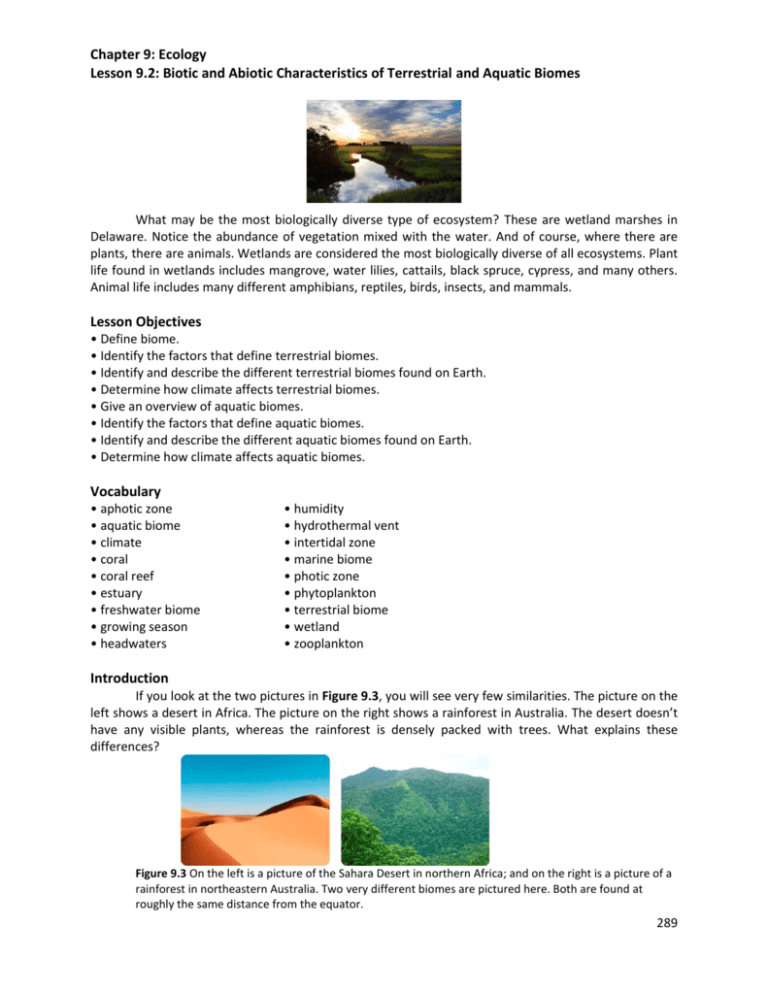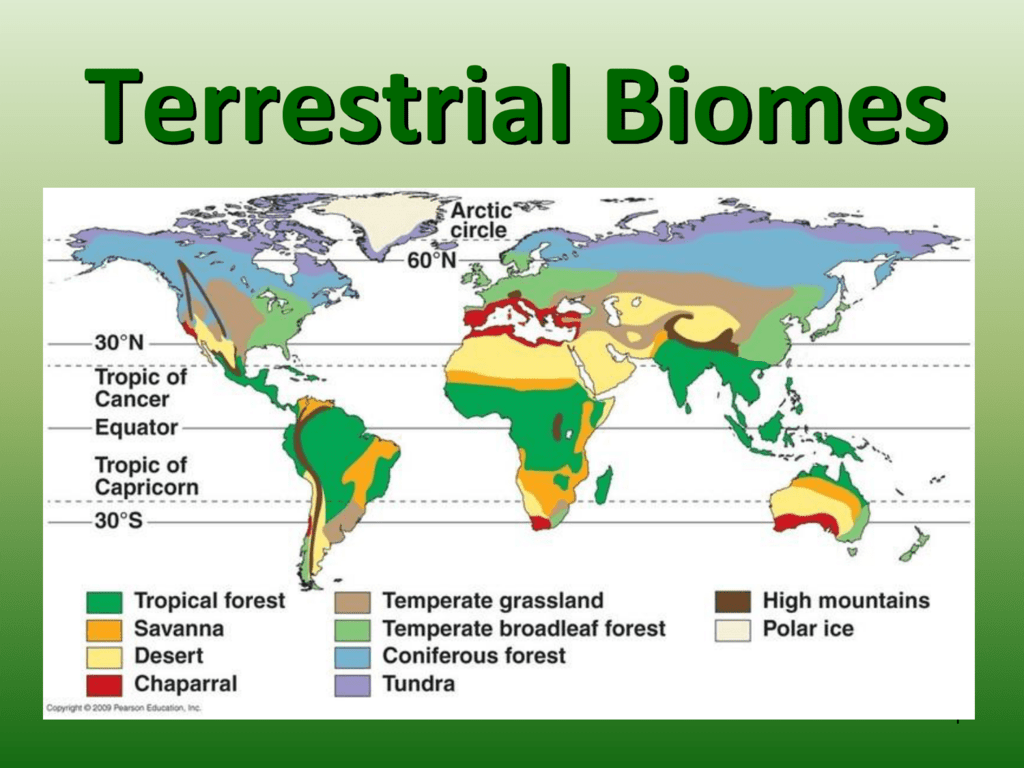Describe the Abiotic Factors That Determine a Terrestrial Biome
A terrestrial biome is a land biome vs an oceanlakestream biome. Two major abiotic factors that determine terrestrial biomes are climate and latitude.
Temperature and precipitation and variations in both are key abiotic factors that shape the composition of animal and plant communities in terrestrial biomes.

. The biome is the largest natural terrestrial ecosystems. Terrestrial biomes which are land-based such as deserts and forests. In the lower latitudes around the Equator temperatures are the highest.
Hendikeps2 and 4 more users found this answer helpful. Latitude affects terrestrial biomes according to the angle at which the sunlight strikes Earth. Latitude is one of the most important factors in determining global climate patterns.
Some biomes such as temperate grasslands. These include light water flow temperature dissolved oxygen pH salinity and depth in aquatic environme View the full answer. Abiotic factors are non-living elements of the natural world.
Wind temperature rainfall ground water humidity amount of sunlight soil composition intensity of daylight air pollution noise. Some biomes such as temperate grasslands and temperate forests have distinct seasons with cold weather and hot weather alternating throughout the year. Some examples of abiotic factors include-- oxygen availability sunlight water minerals.
In a terrestrial ecosystem examples might include temperature light and water. Temperature is a significant abiotic factor in the tundra region and it. Four abiotic factors in an eycosystem are snow ice and water and temperatureFour biotic factors in a penguins ecosystem are bacteria fish krill and the leopard sealsabiotic factors are all.
Abiotic factors that impact an aquatic ecosystem include temperature salinity flow and dissolved oxygen in the water d. Learn more about abiotic factors with this curated resource collection. The abiotic factors such as the amount of rainfall and the temperature are going to influence other abiotic factors such.
Abiotic factors that help characterize a biome include climate temperature humidity soil type amount of sunlight and amount of water that is available. Abiotic factors could be all kinds of things. In terrestrial biomes the availability of soil nutrients is a limiting factor.
Describe the abiotic factors that determine a terrestrial biome. Terrestrial biomes is related with land ecosystem like forests deserts tundra etc while aquatic biomes is related with water which can be freshwater or marine ecosystems. Temperate grasslands savannas and shrublands is a terrestrial biome defined by the World Wide Fund for Nature.
Abiotic and biotic factors work together to create a unique ecosystem. Temperature and precipitation and variations in both are key abiotic factors that shape the composition of animal and plant communities in terrestrial biomes. The distribution of large-scale ecosystems biomes is determined by climate.
That is elements of the environment that affect the species that live there. What is the most important abiotic factor that limits distribution of the tundra biome. Climate is determined by latitude elevation ocean currents and other abiotic factors.
We identify a biome by its vegetationThis is because plants form the bulk of the community in any ecosystem. Abiotic factors could be all kinds of things. In a marine ecosystem abiotic factors would include salinity and ocean currents.
The abiotic factors of the tropical rain forest include. Oxygen is non polar water is polar. Wind temperature rainfall ground water humidity amount of sunlight soil composition intensity of daylight air pollution noise pollution etc.
Describe one terrestrial biome and one aquatic biome. List and describe six abiotic factors of an ecosystem that can affect its living organisms. Abiotic factors are non-living factors that are crucial to the functioning of a terrestrial land biome.
Factors affecting terrestrial ecosystem are- a Moisture Water is important for growth of the plant because the nutrients required for the growth are supplied in a dissolved state from the roots to the leaves through the medium of water. Plants occur in distinct groups of communities in areas having similar climatic conditions are called biomes. Temperature and precipitation and variations in both are key abiotic factors that shape the composition of animal and plant communities in terrestrial biomes.
Temperature and precipitation and variations in both are key abiotic factors that shape the composition of animal and plant communities in terrestrial biomes. Temperature is a lot more constant in aquatic biomes than terrestrial biomes because of waters high heat capacity However warmer temperature and colder temperature can fluctuate in small ponds and lakes. Some biomes such as temperate grasslands and temperate forests have distinct seasons with cold weather and hot weather alternating throughout the year.
Aquatic biomes which are water-based such as ponds and lakes. Answer 1 of 2. Latitude air pressure and winds are important factors that determine the climate of a place.
The solubility of oxygen in water is low and decreases with increasing temperature. This problem has been solved. Some biomes such as temperate grasslands and temperate forests have distinct seasons with cold weather and hot weather alternating throughout the year.
Identify the two major abiotic factors that determine the type of terrestrial biome in an area Recognize distinguishing characteristics of each of the eight major terrestrial biomes Earths biomes can be either terrestrial or aquatic.

Terrestrial Biomes 1 Biomes Community In A Food

Chapter 9 Ecology Lesson 9 2 Biotic And Abiotic Characteristics Of


No comments for "Describe the Abiotic Factors That Determine a Terrestrial Biome"
Post a Comment